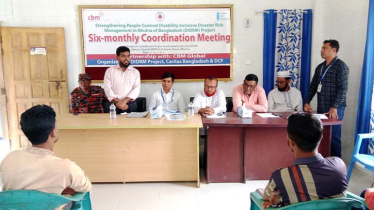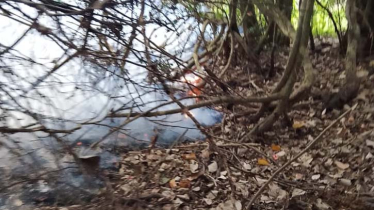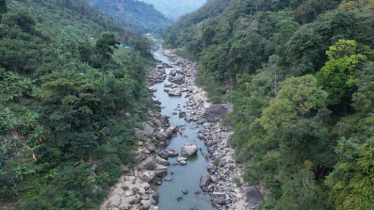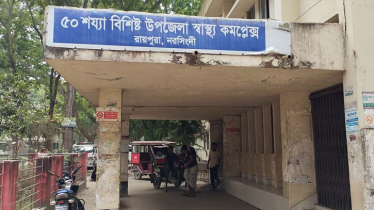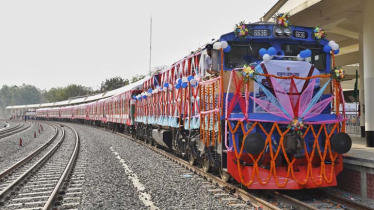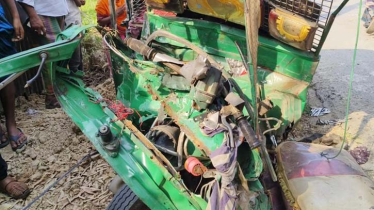
Photo: Messenger
The Kaliganga River, once a vital waterway in Manikganj, now languishes as a nearly lifeless canal. The river, originating from the Jamuna at Daulatpur in Manikganj, used to stretch 78 kilometers with an average width of 242 meters. However, today it is a mere shadow of its former self, reduced to a dry canal with sand dunes covering its bed, except during the monsoon season.
Local observations reveal the drastic transformation. In places like Ashapur village, the river's width has shrunk to as little as 8 to 10 meters. Residents recount the river's former glory, recalling times when it supported robust currents and accommodated large steamers. Now, farmers like Badr Uddin find themselves cultivating rice seedlings in the middle of what was once a flowing river. Illegal sand traders, focusing on areas with remaining water, exacerbate the situation.
Manikganj Water Development Board's Executive Engineer, Main Uddin, acknowledges the severity of the issue and mentions ongoing projects aimed at restoring navigability through river dredging. However, the challenges persist, and additional projects are being pursued with climate-focused organizations and government ministries to address further excavation needs.
A drive along the Dhaka Aricha highway at the Tara Bridge area illustrates the contrasting scenes. While there's water beneath the Kaliganga bridge for half a kilometer, vast stretches on either side have succumbed to dryness. Areas like Ashapur, Singjuri, Uttar Tara, Jabra, Durgapur, Sadak Ghata, Char Beutha, Galinda, Navagram, Char Ghosta, Aligarchar, and Shimulia have practically transformed into crop fields, showcasing the river's devastating decline.
The impact is far-reaching, affecting the livelihoods of local communities. Farmers who once relied on the river for irrigation now face a crisis as the dwindling water levels contribute to reduced agricultural production. As a result, the economy of the region, which was historically intertwined with the river, is gradually shrinking.
Environmental activist Deepak Kumar Ghosh emphasizes the urgent need for integrated river management, calling for government attention and effective action. The decline of the Kaliganga River is not just an environmental crisis but also an economic one for the district of Manikganj.
District Farmers Association General Secretary Nazrul Islam highlights the interconnectedness of the river's health with the well-being of the community. The diminishing river has led to a drop in groundwater levels, exacerbating irrigation issues and hampering agricultural productivity.
Deputy Director of Manikganj Environment Department, Saiful Islam, describes the dire condition of rivers in the region, particularly the Kaliganga and Dhaleswari. He emphasizes the urgency of addressing the decreasing water levels, which have transformed the once-flowing Kaliganga into crop fields.
Deputy Director of District Agriculture Extension Department, Abu Md. Enayet Ullah, offers a glimmer of hope by suggesting that the sandy soil resulting from the dried-up riverbed could be cultivated after a few years of grazing. The plan involves growing mustard, groundnut, corn, and rice, envisioning a future where these cultivated pastures bring economic prosperity to the region.
The Kaliganga River's decline is a multifaceted crisis that demands immediate attention, collaborative efforts, and sustainable solutions to revive not only the river but also the interconnected economy and livelihoods that once thrived along its banks.
Messenger/Shahin

